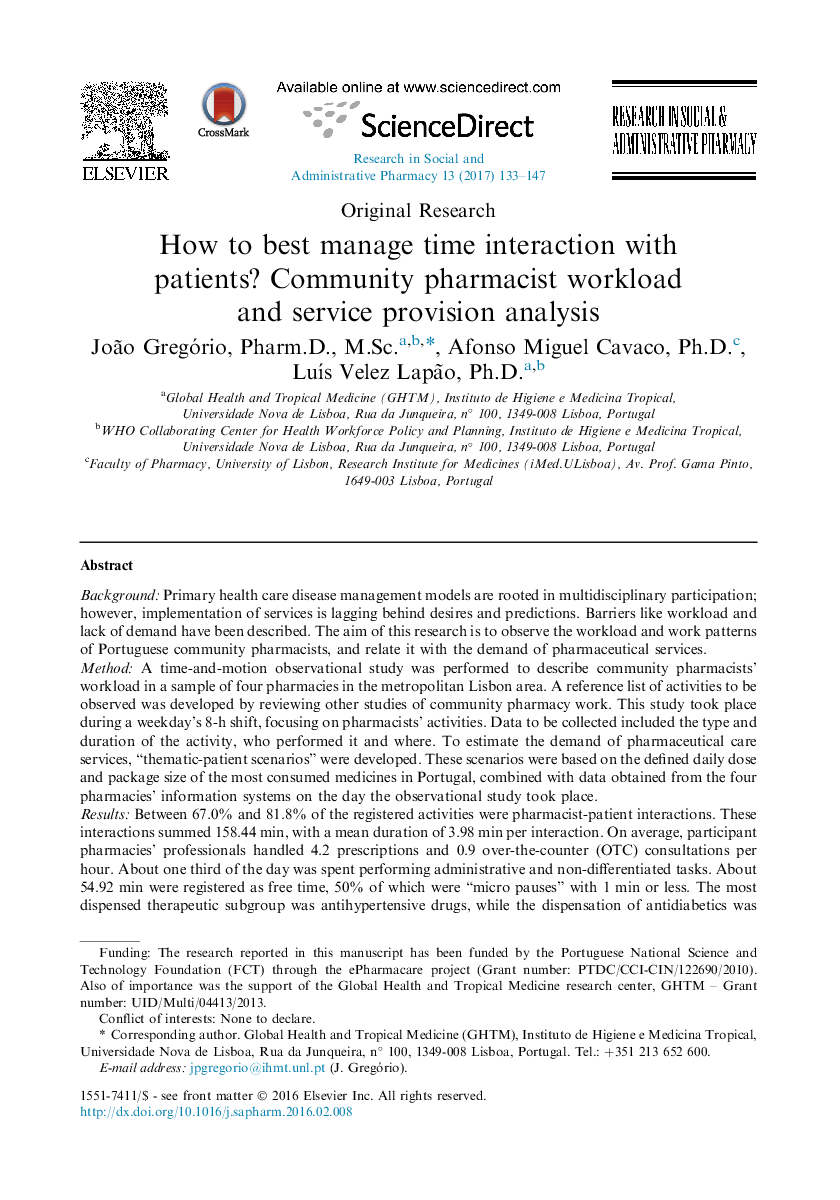| کد مقاله | کد نشریه | سال انتشار | مقاله انگلیسی | نسخه تمام متن |
|---|---|---|---|---|
| 5551383 | 1402945 | 2017 | 15 صفحه PDF | دانلود رایگان |
BackgroundPrimary health care disease management models are rooted in multidisciplinary participation; however, implementation of services is lagging behind desires and predictions. Barriers like workload and lack of demand have been described. The aim of this research is to observe the workload and work patterns of Portuguese community pharmacists, and relate it with the demand of pharmaceutical services.MethodA time-and-motion observational study was performed to describe community pharmacists' workload in a sample of four pharmacies in the metropolitan Lisbon area. A reference list of activities to be observed was developed by reviewing other studies of community pharmacy work. This study took place during a weekday's 8-h shift, focusing on pharmacists' activities. Data to be collected included the type and duration of the activity, who performed it and where. To estimate the demand of pharmaceutical care services, “thematic-patient scenarios” were developed. These scenarios were based on the defined daily dose and package size of the most consumed medicines in Portugal, combined with data obtained from the four pharmacies' information systems on the day the observational study took place.ResultsBetween 67.0% and 81.8% of the registered activities were pharmacist-patient interactions. These interactions summed 158.44Â min, with a mean duration of 3.98Â min per interaction. On average, participant pharmacies' professionals handled 4.2 prescriptions and 0.9 over-the-counter (OTC) consultations per hour. About one third of the day was spent performing administrative and non-differentiated tasks. About 54.92Â min were registered as free time, 50% of which were “micro pauses” with 1Â min or less. The most dispensed therapeutic subgroup was antihypertensive drugs, while the dispensation of antidiabetics was characterized by a high number of packages sold per interaction. From the developed scenarios, one can estimate that a chronic patient may visit the pharmacy 4-9 times per year, depending on the condition presented.ConclusionWorkload results are very similar to findings from studies in other countries, which may be an indication of uniformity of community pharmacy practice across countries. The amount of time a pharmacist has at the counter to interact with a patient during a year renders disease management or therapeutic management non-viable. Also, the perception of “lack of time,” many times reported as a barrier for service provision, must be called into question, since substantial available time was found. However, to turn this available time into usable time, redesign of work processes and new role definition are necessary. Both better management and new communication channels should be developed to address this gap and increase patient follow-up services.
Journal: Research in Social and Administrative Pharmacy - Volume 13, Issue 1, JanuaryâFebruary 2017, Pages 133-147
